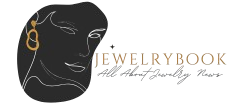The colored diamond is the phenomenon of today’s jewelery world, with the rarest colors – pink, blue, red and green – fetching stratospheric prices at auction. But diamonds come in all colors, shades and nuances – fascinating, enigmatic blends of mingled tones that the industry labels “secondary” and I call “in-between colors”: pinkish-brown, greenish-grey, orange-yellow, cognac, champagne and peach are among the countless permutations. Even though a fraction of the price of a premium or “straight” colored diamond (a vivid pink can run to more than $4mn a carat), they still possess the emotion-stirring blend of hue and light that makes them a tempting alternative for bridal jewelry.

Tiffany & Co gold and yellow- and white-diamond ring, POA © Maxime Poiblanc
Alisa Moussaieff, one of the world’s leading experts in colored diamonds, says they are “a contemporary, sophisticated choice, possibly for the more extroverted bride. It’s a look of individuality and artistic self-expression.” She seeks out spectacular diamonds in shades of intense brown (as worn by Rihanna at the 2023 Oscars), orange-brown, or purplish-pink.
The most valuable rarities, especially pinks and occasional blues, are the territory of specialist diamond houses such as Moussaieff, as well as Tiffany & Co, Harry Winston, Graff and Boghossian; while yellow diamonds are more accessible and have been creeping into bridal jewelery collections at major maisons and individual brands. Dior’s Rose Couture Abstraite suite sees the brand’s favorite rose motif cast in shades of citrus diamonds, Chaumet tops the tiara-shaped Joséphine Éclat engagement ring with a striking single yellow diamond, while New Delhi-based individualist designer-jeweler Neha Dani smothers the petals of her bride-perfect Chrys earrings in pink diamonds, and the crisp curling leaves of the Golden Leaf earrings in yellow ones.
To celebrate the grand reopening of its Fifth Avenue store, this month Tiffany & Co will display an array of awe-inspiringly rare fancy-colored diamonds – blues, greens and pinks. Tiffany secured one of the very last collections of precious pink diamonds to come out of the now extinct mine in Western Australia. Jewels are now in the process of being created around these heritage stones, with their intoxicating candy-pink color and intense brilliance. Also for the reopening, the immense yellow Tiffany diamond is being reset in a new design. Nicholas and Michael Wainwright of Boodles report that yellow is by far the most popular diamond color for engagement rings after white. Although they have specialized in pink diamonds and are now working with the Cullinan mine in South Africa – the source of rare blue diamonds – pinks, they say, can be too valuable for bridal purchases, and blues are “telephone number prices”. Instead they set engagement rings and bridal wear jewelery with small pink diamond accents, for a hint of romance. “We often use a little pink diamond in the underside of the setting, which is rather indulgent as it can’t be seen in wear, but the wearer knows it’s there,” says Michael Wainwright.

De Beers has always championed unusual secondary colors of diamonds, breaking through rigid industry classifications. As its CEO Céline Assimon explains: “Dual-colored diamonds are less known but incredibly beautiful and special. Their blends can create a visual experience that is completely unique, as colors can play together under different light conditions.” Andrew Coxon, president of De Beers Institute of Diamonds, explains that the second named color is usually the more valuable: “A purplish-bluish-greenish-grey will be worth a lot less than a purplish-greyish-greenish-blue, because it’s a gray diamond and not a blue. The more descriptors, the less they cost.”

Ananya rose-gold and white-, yellow- and pink-diamond Magnificent Jewels Volume One ring, £9,800

Ruth Tomlinson gold and mixed-diamond Contrast Cut ring, £2,680

Neha Dani white- and rose-gold and white- and pink-diamond Pink Chrys earrings, $38,000

Fernando Jorge rose-gold and brown-diamond Stream Wave ring, £5,500
Brown or cognac brings warmth to the diamond’s brilliance, as well as giving it a casual look. Fernando Jorge has always worked with brown diamonds, from his first Fluid collection through to the flamboyant Disco collection, and likes to set them in rose or black rhodium-plated gold. Swiss jeweler Bucherer uses color to play with the classic solitaire concept: an oval brown diamond on a simple white diamond band, or an oval yellow diamond on a band of brown diamonds, both of which could double as both engagement and wedding rings.
Ananya is a new, boutique jewelery brand, focusing on the connection between gemstones and wellbeing, inspired by Indian traditions. Designer Ananya Malhotra, a Central Saint Martins graduate, says she has seen a shift in demand for colored diamonds, “especially among younger brides who are looking for a modern vibe. They want something edgier than a classic white diamond, something experimental, yet subtle and understated. Once they understand colored diamonds, they’re keen to explore the range of shades. It’s about education fueling demand.”
London-based Ruth Tomlinson would agree. This month the designer-jeweler launched a collection of alternative engagement rings, all set with gray diamonds filled with fascinating inclusions, which are usually ignored by conventional jewelers. Tomlinson sets the stones in her signature artisanal style of clustered encrustation, suggestive of timeless antiquity, or sunken treasure. She explains how she has seen a growing appetite for non-traditional engagement rings. “There seemed to be a moment around 10 years ago when women realized that an engagement ring didn’t have to be what tradition dictates it should be.” Women now want stones with character and, as they tend to be more involved with the purchase, a ring that resonates with their personal style. The answer, surely, is “in-between” colored diamonds of intriguing, indefinable, emotive hues, tones, light and shadow. As Andrew Coxon notes: “Finally, a way to make people dream about diamonds.”
Photographer’s assistant, Jacob Polcyn-Evans. Set design assistant, Jordan Mixon
